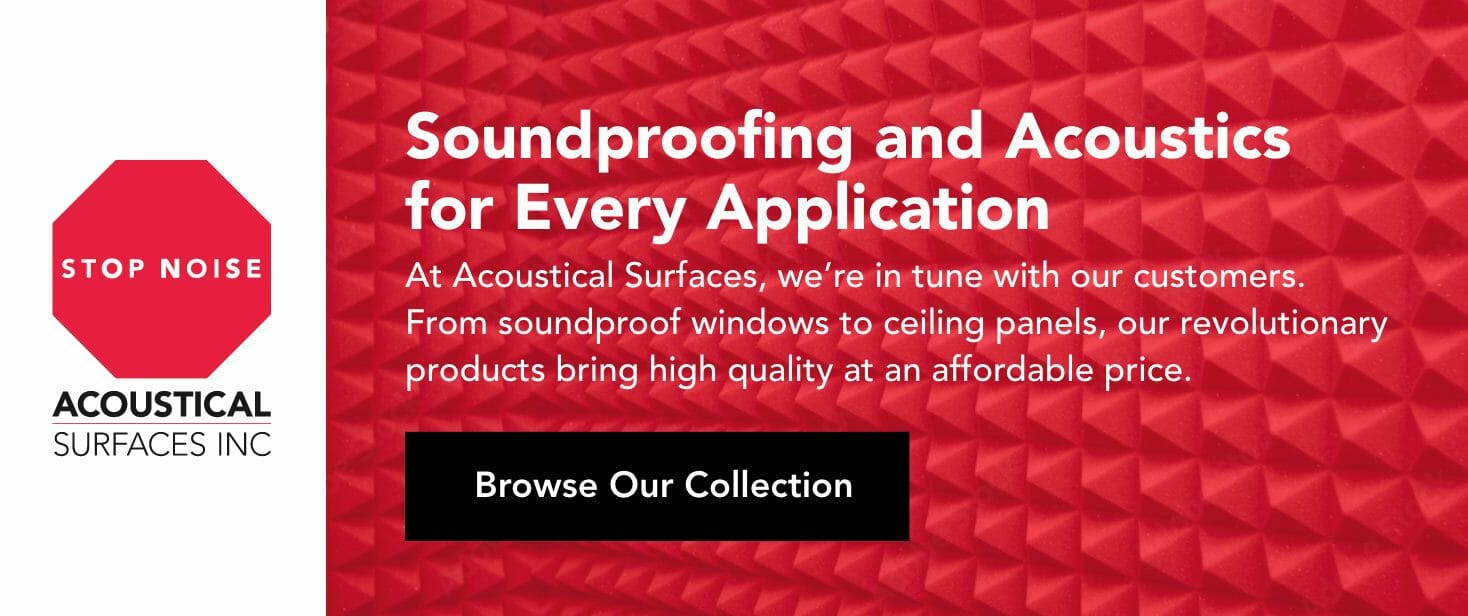Does Soundproofing Affect Wi-Fi and Phone Signals?
It would be convenient to have only a single goal in mind when designing spaces, but we usually need to balance multiple factors—such as reducing noise levels without suppressing electronic signals.
This begs the question: Does soundproofing affect WiFi and phone signals?
So long as proper materials and planning are used, the answer is no.
Soundproofing products, methods, and placement—along with the structural design, building materials, and finishings of an environment—can be planned with both acoustic and connectivity needs in mind. A combination of soundproofing and signal-boosting decisions and tools can create the right blend of sound control and signal reception for your space.
Introduction to Soundproofing and Signal Concerns
Soundproofing is an umbrella term that might be better described as sound control. It can refer to:
- Entirely soundproofed environments such as recording studios
- Directing and enhancing acoustics for performance and entertainment venues
- Reducing and controlling background noise in home and commercial environments
The third practice—reducing and controlling sound—is the most common, employing multiple methods to disrupt the ongoing transmission of the sound wave by:
- Absorbing them in soft and muffling surfaces
- Redirecting them rather than bouncing them back as flutter echoes
- Limiting the sound travel across uninterrupted spaces
- Reducing the transfer of sound between connected spaces
Because soundproofing typically includes adding components that block the sound wave, it’s often seen as counterproductive to the need to reduce components that block cell phone and Wi-Fi signal. But these two things—sound waves and electromagnetic waves—are entirely different.
Understanding How Signals Work
Sound waves travel by bumping molecules into each other—they easily move through air where molecules are light, but become absorbed or are reflected when they come into contact with denser materials (and they can’t travel at all in a vacuum like space).
An electromagnetic wave, on the other hand, is a form of radiation that doesn’t need molecules to travel. These waves can travel through space, air, and solid objects, although different lengths or types are absorbed to varying degrees by certain materials.
Cellular and Wi-Fi signals are types of electromagnetic waves that can be weakened by the following construction materials, starting with the most disruptive:
- Metal
- Concrete, stone, and brick
- Thick, sealed wood
- Plaster walls with metal laths or mesh
- Triple-pane, double-insulated, or low-emission (Low-E) windows
- Foil-backed insulation
Soundproofing Materials and Signal Penetration
You can absorb and disrupt sound through a variety of practices and product use, from rearranging furniture to installing custom fittings. When products are installed to block, redirect, and absorb sound, they’re typically constructed of soundproofing materials like:
- Cellulose
- Wood fiber/wool and Recycled Wood Fiber Residue
- Fiberglass
- Vinyl and vinyl-coated polyester (VCP)
- Polyester
- Cotton, primarily recycled
- Mass-loaded vinyl
- Melamine foam
- Porous expanded polypropylene (PEPP)
- Rubber, primarily recycled
- Recycled glass
Most of these echo reducing panels, tiles, and other iterations are lightweight, and rarely designed to fully enclose a room. There are some products that contain perforated metal and foil-backed insulation, but they’re thin or perforated, allowing the cell or Wi-Fi signal to penetrate.
Expert Tips
As you work to improve your space’s sound control, connectivity, or both, you can scale up until you reach the right conditions for both. Consider:
1. Placement
The first step in addressing both connectivity and sound issues is simply adjusting the furnishings and router—sometimes small tweaks, even the direction your router faces or how lobby furniture is grouped, can result in improvements.
For instance, one sound control option is decoupling surfaces by adding space between layers of the walls or ceiling. This rearrangement of surfaces can have a positive effect on both goals.
2. Material Choice
While some materials, such as thick concrete walls, double down on blocking both sound waves and electromagnetic waves, they aren’t typically on the menu when you add soundproofing, since they’re heavy, expensive, and intrinsic to the structure.
However, if you’re already in a space with connectivity issues, take care in selecting and placing acoustic products to avoid adding any minute stress to reception.
3. Add Boosters
Consider investing in technology to boost your cell and Wi-Fi signals rather than disrupting heavy materials that already provide built-in sound control. You can:
- Install a Wi-Fi booster, extender, or repeater
- Use a mesh-based Wi-Fi system
- Utilize Wi-Fi calling
- Add a cell signal booster or indoor repeater device
- Invest in a macrocell, small cell, or femtocell system
Get Started on the Right Soundproofing Plan for Your Space
Installing the soundproofing you need without losing connectivity requires an individual approach to your facility. After analyzing the layout and construction materials, a soundproofing plan can incorporate the right mix of acoustic panels, soundproof curtains, and other components to absorb and scatter sound without blocking critical signals.
Acoustical Surfaces is the right expert to help you achieve these goals. We work with our clients at an individual level to understand their unique needs and goals before crafting an acoustic plan proposal. From bespoke fittings for large-scale venues to recommended products for home and room solutions on a budget, we can help.
Contact us today to get started on sound and vibration control for your space without interrupting your connectivity.






